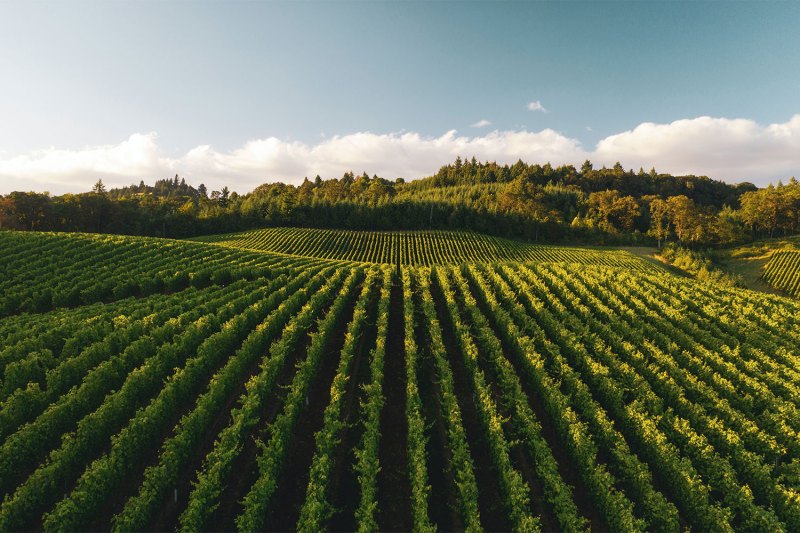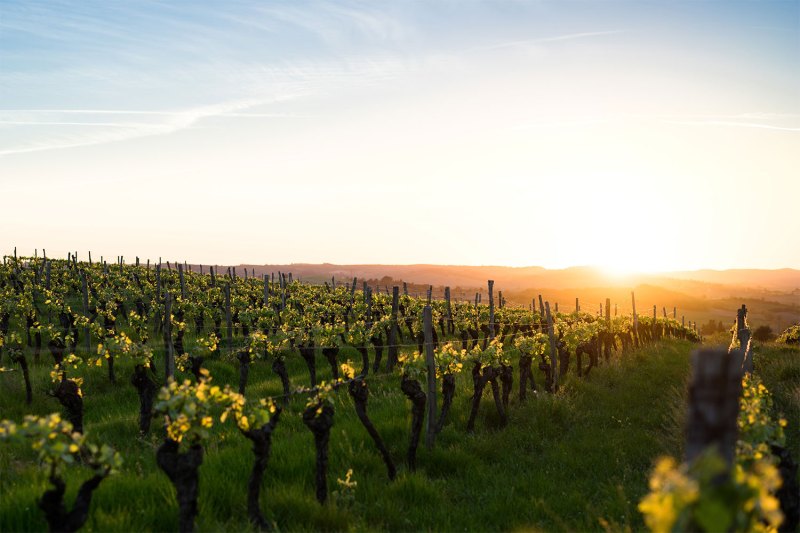The drinks industry has come a long way in so many regards. In the present-day wine realm, sustainability is practically implied. But it wasn’t always that way.
In the early 1990s, when America was listening to Amy Grant, guzzling Merlot and Snapple, and chowing down on these snacks, the focus was less on the means than the ends. In other words, we weren’t looking too closely at the way we farmed the many crops that make the wheels of the industry turn.
Stuart Spencer is the executive director of the Lodi Winegrape Commission. He’s also a winemaker, making Zinfandel, Barbera, Verdehlo, and more for St. Amant Winery. He says thirty years back, sustainability wasn’t even part of the conversation. Yet, Lodi was progressive and began to realize a need for both honoring and promoting holistic farming. Enter LODI RULES, the nation’s first wine sustainability program, which officially took shape in 1992.

“The success and credibility of the program were based on a farmer-to-farmer grassroots learning structure that featured small group tailgate meetings in vineyards,” Spencer says. “We introduced concepts such as economic thresholds, biodiversity, cover cropping, beneficial insects, etc.”
These little gatherings blossomed into the foundation for the organization’s first major workbook and ultimately evolved into LODI RULES, a system that began its rigorous brand of certification back in 2005. A major part of the program involves biodiversity, something Spencer says is critical. “We recognized that a healthy and vibrant ecosystem was the foundation of successful winegrowing,” he adds. “This approach recognizes the complex community of organisms and their physical environment working together as an ecological unit.”
The benefits of biodiversity are many, from carbon sequestration and fewer greenhouse gasses to nutrient recycling and keeping pests and disease in check. It also paves the way for a welcoming habitat for beneficial insects pest-getters, like birds of prey. Prior to industrialized farming, we relied on biodiversity to keep conditions in balance. The introduction of harmful pesticides and fertilizers, along with resource-taxing practices like irrigation, rattled ecosystems entirely, eliminating a lot of these beneficial creatures and microbiology and leaving sites dependent on unnatural additives.
Fortunately, the last couple of decades have seen a returned interest in the ways of old. Methods like biodynamic and organic farming, along with approaches that honor a warming climate and diminishing freshwater supply, have helped spread the gospel of sustainability. Moreover, it’s become more of an expectation from the consumer, not only on an environmental plane but a social and economic one, too, as the rise of the B-Corp model suggests.
LODI RULES is an involved process, incorporating some 100 measurable standards that span everything from business and human resources management to soil and water management. More than 1,200 vineyards in the Lodi region are certified, accounting for about 27,000 planted acres. Close to 24,000 acres elsewhere in California wine country are adhering to the standards.
For now, a different kind of sustainability looms large — the economic kind. Spencer cites an oversupply of wine and the expensive nature of farming in California as major issues. He says there’s quite a bit of regulation in the area and the cost of labor is high. To make matters even more challenging, pests like grapevine leafroll-associated virus 3 (an unsexy name for a very unsexy virus), spread by the invasive mealybug, are wreaking havoc in vineyards.

LODI RULES has spawned many other certification programs all over the globe. Another widely respected one, LIVE, started in Oregon in 1999. Vineyards and wineries representing these green-minded protocols can easily be identified per logos and insignia on labels, websites, and other branding media. And while establishing an initial bar is important, these programs continue to evolve, making their flock of producers adapt in environmentally conscious ways to safeguard a bright and healthy future for wine as we know it.
“We want to be the most rigorous sustainability program in the world,” Spencer says. Interestingly, the organization doesn’t believe in the 100% sustainability model. That, Spencer suggests, just means the bar is set really low so that everybody is granted certification. Presently, the organization is working on standards related to vineyard viruses and managing the pesky mealybug. Also on the table are new measures that map the entire ripple effect of organic and inorganic pesticides, including effects on birds, bees, worms, water quality, and more. “It goes beyond just saying something is good, OK, or bad, and actually strives to scientifically measure that impact based on EPA data and how it’s used.”
Spencer warns that sustainability’s popularity, however, isn’t always helpful. LODI RULES works, he says, because it starts with farmers, working outward. In other places, other jurisdictions get involved from the get-go, essentially issuing to-do lists for growers without really acknowledging the complexity or uniqueness of their situations.
His advice to other appellations looking to be genuinely sustainable: Start small in the vineyard. Build trust and learn together.


